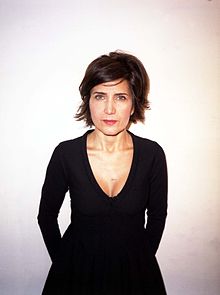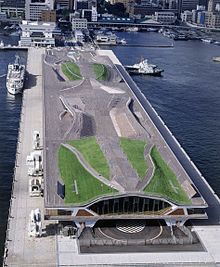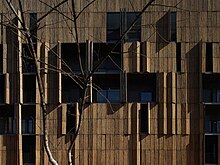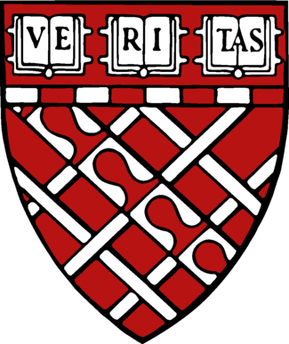
The Harvard Graduate School of Design (GSD) is the graduate school of design at Harvard University, a private research university in Cambridge, Massachusetts. It offers master's and doctoral programs in architecture, landscape architecture, urban planning, urban design, real estate, design engineering, and design studies.
Farshid is a Persian proper name. It consists from two morphemes, far + shîd. In this manner we could translate the Old Persian proper name Farshid/Farsheed as 'sunshine' or 'the splendor or the pomp of the sun'. This name is commonly used in Iran.
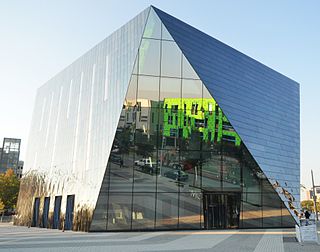
The Museum of Contemporary Art Cleveland is a contemporary art museum in Cleveland, Ohio, United States. It is the only contemporary art venue of its kind in Metropolitan Cleveland. The organisation was founded by Marjorie Talalay, Agnes Gund, and Nina Castelli Sundell in 1968 and has undergone several name and venue changes in the years following its 1968 founding. Originally known as The New Gallery, the museum was rebranded as the Cleveland Centre for Contemporary Art in 1984. The gallery has operated under its current branding as the Museum of Contemporary Art Cleveland (moCa) since 2002.

Alejandro Zaera Polo is a Spanish architect, theorist and founder of Alejandro Zaera-Polo & Maider Llaguno Architecture (AZPML). He was formerly dean of the Princeton University School of Architecture and of the Berlage Institute in Rotterdam.
Hashim A. Sarkis is a Lebanese educator and architect. Since 2015, Sarkis has been Professor and Dean of the School of Architecture and Planning at the Massachusetts Institute of Technology. He is also founding principal of Hashim Sarkis Studios since 1998.
Foreign Office Architects, FOA, was an architectural design studio headed by former husband and wife team Farshid Moussavi and Alejandro Zaera-Polo. The London-based studio, which was established in 1993, specialised in architectural design, master planning and interior design services for both public and private sector clients. Following the end of the couple's marriage, the winding up of the studio's activities was announced in December 2009. The establishment of two new practices, FMA and London/Barcelona based AZPA Limited followed in 2011.
Alan Balfour is the former dean of the Georgia Tech College of Architecture. He has also held research and/or faculty positions at MIT, Rice University, Architectural Association School of Architecture, and Rensselaer Polytechnic Institute, and was instrumental in establishing the master's degree program in architecture at Georgia Tech.

Philippe Rahm Dipl. EPFL - Ecole Polytechnique Fédérale de Lausanne - Switzerland 1993 is a principal architect in the office of Philippe Rahm architectes, based in Paris, France. His work, which extends the field of architecture from the physiological scale of the body to the climatic scale of the city has received an international audience in the context of sustainability.
Ecological urbanism draws from ecology to inspire an urbanism that is more socially inclusive and sensitive to the environment. It is less ideologically driven, than green urbanism or sustainable urbanism. In many ways, ecological urbanism is an evolution of, and a critique of, landscape urbanism arguing for a more holistic approach to the design and management of cities. This type of urbanism has a central scope of four main objectives: Compactness, complexity, efficiency, and stability. This model of Urbanism strives to tackle the current challenges of society by intertwining sustainability and urban occupation models. "Ecological urbanism" was coined by architect and planner Miguel Ruano in his 1998 book Eco-Urbanism: Sustainable Human Settlements, 60 Case Studies. The term first appeared as "EcoUrbanism", which is defined as "the development of multi-dimensional sustainable human communities within harmonious and balanced built environments". The term was used later in April 2003 at a conference at the University of Oregon, and again in 2006 in a paper by Jeffrey Hou. Mohsen Mostafavi used the term in the 2007 publication Intervention Architecture and in a lecture at the Canadian Centre for Architecture. Today, ecological urbanism is recognized as a formal academic research topic. Notably, the Harvard University Graduate School of Design has conducted a conference, held an art exhibition, and published a book all centered around ecological urbanism.
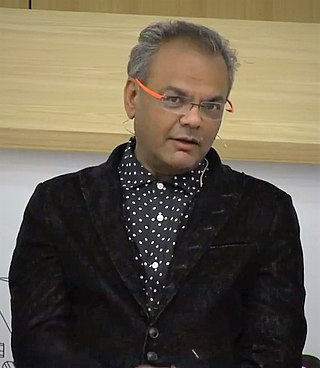
Hanif Mohamed Kara is a structural engineer and is design director and co-founder of London-based structural engineering practice AKT II. He has taught design internationally, is a member of the board of trustees for the Architecture Foundation and was a commissioner for CABE from 2008 to 2011. He is currently Professor in Practice of Architectural Technology at Harvard Graduate School of Design. He also taught as professor of Architectural Technology at KTH Royal Institute of Technology in Stockholm from 2009 until 2012. He lives in London with his wife and two daughters.

1 The Avenue is a building in Spinningfields, Manchester, England. It is situated on Deansgate adjacent to the Grade I listed John Rylands Library.

The Jane Drew Prize is an architecture award given annually by the Architects' Journal to a person showing innovation, diversity and inclusiveness in architecture. It is named after the English modernist architect Jane Drew.
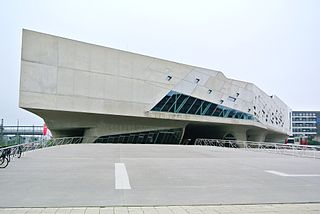
Parametricism is a style within contemporary avant-garde architecture, promoted as a successor to Modern and Postmodern architecture. The term was coined in 2008 by Patrik Schumacher, an architectural partner of Zaha Hadid (1950–2016). Parametricism has its origin in parametric design, which is based on the constraints in a parametric equation. Parametricism relies on programs, algorithms, and computers to manipulate equations for design purposes.
Frank Barkow is an American architect. His practice Barkow Leibinger, founded with his partner Regine Leibinger, is known for industrial architecture, domestic and cultural projects, as well as for the two landmark office towers, the TRUTEC Building in Seoul (2006) and the Tour Total in Berlin (2012).

Shelley McNamara is an Irish architect and academic. She attended University College Dublin and graduated in 1974 with a Bachelor of Architecture. She founded Grafton Architects with Yvonne Farrell in 1978. Grafton rose to prominence in the early 2010s, specialising in stark, weighty but spacious buildings for higher education. McNamara has taught architecture at University College Dublin since 1976 and at several other universities.
Parametric thinking is the influence of engaging in a thinking process that links, relates and outputs calculated actions to generate solutions to problems, rather than simply seeking them. It has its origins in the design fields of urban design, architectural design, interior design, industrial and furniture design. The process is associated with parametricism, a style within contemporary avant-garde architecture, promoted as a successor to post-modern architecture and modern architecture.
The London School of Architecture, known as the LSA, is a small independent higher education provider based in London. It is England's first independent school of architecture since the Architectural Association opened in 1847.
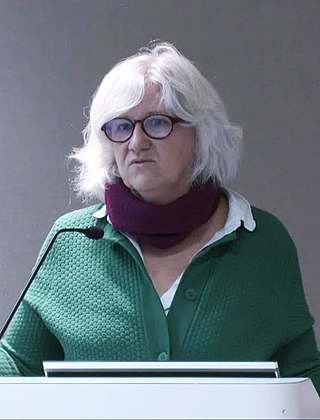
Teresa Gali-Izard is a Spanish landscape architect, agronomist and professor of landscape architecture.
Ana Miljački is a historian, theorist, educator and curator of architecture. She is an Associate Professor of Architecture at MIT where she directs the Critical Broadcasting Lab, the Architecture and Urbanism Group and the Master of Architecture Program.
Grace La is a first generation, Korean-American designer, Chair of the Department of Architecture and Professor of Architecture at the Harvard University Graduate School of Design (GSD), and Principal of LA DALLMAN. Co-founded with James Dallman, LA DALLMAN is a design firm recognized for the multidisciplinary integration of architecture, infrastructure, and landscape, with offices in Boston, MA and Milwaukee, WI. La previously served as the Chair of the Harvard GSD's Practice Platform and served as GSD's Director of the Master of Architecture Programs (2014–17).
